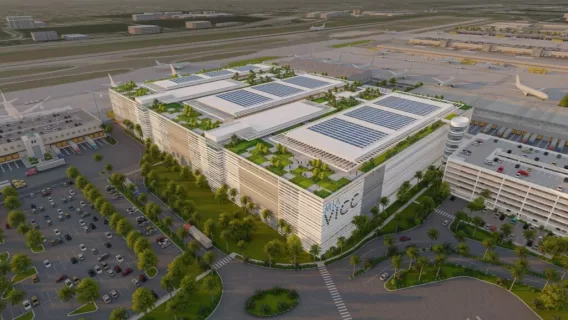Miami International Airport (MIA) is on the verge of a massive transformation with a planned $400 million expansion in its cargo facilities. This ambitious project if given the greenlight is set to boost the airports ability to handle cargo and establish itself as a top hub for global trade. While initial reports offer an overview, delving deeper into the specifics unveils implications for Miami, Florida and the worldwide logistics sector.
Insights from Key Players
In an interview Miami, Dade Mayor Daniella Levine Cava highlighted the significance of the Vertically Integrated Cargo Community (VICC) project. “The proposed cargo expansion at MIA isn’t about improving infrastructure; it signifies a step towards sustainability and resilience” she expressed. This sentiment is echoed by individuals from Miami Gateway Partners LLC, the developer venture between Airis Aviation Development based in Houston and Vantage Airport Group headquartered in Vancouver. They emphasized the design and economic advantages that will come with this project.
Financial Breakdown and Economic Impact
The $400 million investment is divided into components with funds allocated for cutting edge technology and infrastructure upgrades. The lease agreement alone is projected to yield $512 million in rent and other revenues over 40 years making it a viable initiative, for Miami Dade County.
Financial experts are emphasizing the effects. According to John Smith, a known economist “This expansion will not increase cargo capacity but also support local businesses and generate thousands of job opportunities.” The initiative will create 8,500 construction jobs and also 2,500 permanent positions after completion, addressing unemployment concerns and fostering development in the area.
In terms of technology and environmental advancements a notable feature of the cargo expansion project at MIA is its state of the art cargo handling system. This innovative technology aims to streamline operations reduce work and enhance efficiency. The facility will encompass automated storage facilities, up to 189 truck docks and administrative offices to ensure smooth goods flow.
Moreover, sustainability plays a role in the projects design. The VICC will integrate eco-technologies and practices in line with Miami Dade County’s dedication to stewardship. Mayor Levine Cava expressed that “Our objective is to make MIA future ready by setting it as a sustainability model within the aviation sector.”
Historical Context and Future Prospects
When considering context and future prospects Miami International Airport has a legacy of expansion and adaptation. The VICC project represents the effort in a series of expansions aimed at upholding MIA’s position as the busiest international freight airport in America.
Throughout history such expansions have fueled growth. Positioned Miami as a key player in global trade.
Looking ahead, the completion of the cargo expansion at MIA in 2029 will boost the airports cargo capacity by least 50% equivalent to 1.5 million tons annually. This expansion will elevate MIA’s capacity to a minimum of 4.5 million tons of cargo with growth up to 5 million tons. Greg Chin, spokesperson for MIA emphasized that this expansion aligns with projected demand until 2040 securing MIAs status as a top tier cargo airport.
Read also: Transforming JKF International Airport: A $19 Billion Expansion to Elevate New York’s Global Gateway
Read also: O’Hare Airport Satellite Concourse 1 design unveiled, Chicago
Impact of Cargo Expansion at MIA on the Community, Job Opportunities
The project not only benefits international trade but also serves as a significant win for the local community. The developer has pledged to hire 60% of its design build-team from within Miami ensuring benefits for residents. Furthermore, the construction phase will generate job opportunities offering prospects for local workers.
Local business owners express optimism about the ripple effects. Maria Gonzalez, who owns a logistics company, near MIA shared her excitement by stating that this expansion will revolutionize their operations by enhancing their capacity to handle goods and improving efficiency in turnaround time’s ultimately boosting competitiveness.
The $400 million cargo expansion project at MIA is an initiative with implications. Through the use of cutting edge technologies a focus on sustainability and boosting the economy the VICC aims to elevate MIA as a hub for global trade. With input from players and an, in depth assessment of its effects it’s evident that this expansion will not benefit Miami but also enhance the worldwide logistics network for years to come.
Additionally, Miami International Airport (MIA) holds a position, as a worldwide transportation center for transporting perishable goods, advanced technology items, communication devices, fabrics, medications and industrial equipment. With, than 90 airlines operating at MIA the airport connects to 175 cities across five continents offering services to 105 cargo destinations.
Read also: Over $200 Million Approved for John Glenn Airport Terminal


